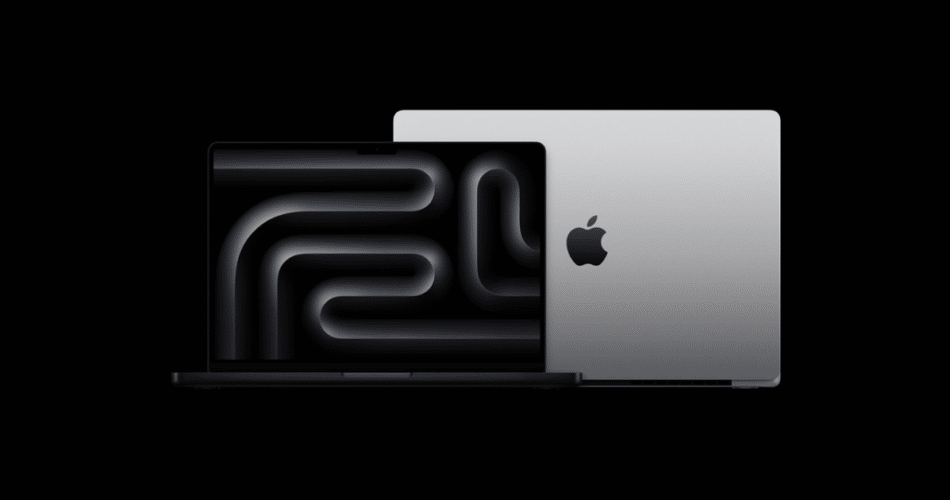Apple has launched its latest 14-inch and 16-inch MacBook Pro models, equipped with powerful M4, M4 Pro, and M4 Max processors. The new MacBook Pro models aim to appeal to users in fields like photo and video editing, 3D modeling, and artificial intelligence (AI) applications.
M4, M4 Pro, and M4 Max chips
At the core of the new MacBook Pro lineup is Apple’s next-generation M4 series, built on an advanced 3-nanometer process for improved efficiency and power. The M4 chip is tailored for daily tasks and high-efficiency needs, offering a balanced 10-core CPU with four performance cores and six efficiency cores, coupled with a 10-core GPU for enhanced graphics. This configuration supports seamless multitasking and moderate graphics work, making it a solid entry-level option for creative users.

The M4 Pro chip significantly upgrades this base, featuring a 14-core CPU (10 performance cores and four efficiency cores) and a 20-core GPU. It offers a 75% increase in memory bandwidth over previous Pro models, enabling the MacBook Pro to handle larger data sets and complex computing tasks with ease. The M4 Max stands as Apple’s most advanced chip, boasting up to a 16-core CPU and a massive 40-core GPU. With over half a terabyte per second of unified memory bandwidth and a neural engine that’s over three times faster than the M1 Max, the M4 Max chip is ideal for professionals running resource-intensive applications such as AI, machine learning, and high-end 3D rendering.
Improved unified memory and bandwidth
One of the standout features in the 2024 MacBook Pro lineup is the increase in unified memory. The M4 model starts with 16GB, upgradable to 32GB, while the M4 Pro and M4 Max versions offer a base of 24GB and scale up to 128GB of unified memory, respectively.
This allows for smoother performance when handling massive files, rendering complex graphics, or running memory-intensive applications. With up to 120GB/s of memory bandwidth on the M4 chip and up to 200GB/s on the M4 Pro, these models offer unprecedented speed in processing and rendering tasks.
Graphics and display advancements
The M4 Max chip features Apple’s advanced ray tracing and mesh shading capabilities, providing up to twice the graphics performance of the M3 models. This feature makes rendering and animation smoother and more realistic, improving the workflow for content creators who rely on real-time graphics and video rendering.

The MacBook Pro retains its stunning Liquid Retina XDR display with HDR capabilities, but Apple has now added a nano-texture glass option for all models. This upgrade reduces glare, making the device suitable for outdoor or high-glare environments. Both the 14-inch and 16-inch models support up to 1000 nits of sustained brightness for SDR content, and peak brightness levels of up to 1600 nits for HDR content. The display also includes a 120Hz ProMotion refresh rate, making scrolling, animations, and gameplay feel exceptionally fluid.
Thunderbolt 5 and connectivity
The new models are also the first to feature Thunderbolt 5, which triples the data transfer rates to up to 120 Gb/s. Both the 14-inch and 16-inch MacBook Pros have three Thunderbolt 5 ports, which support a broader range of peripherals and offer faster connectivity. The HDMI port has been updated to support up to 8K resolution, enhancing the MacBook’s utility for video professionals and presenters. The MacBook Pro lineup also includes an SDXC card slot, a MagSafe 3 charging port, Wi-Fi 6E, and Bluetooth 5.3, ensuring versatile connectivity and compatibility with the latest wireless standards

Camera and audio upgrades
For users relying on video calls and content creation, the new MacBook Pro models come equipped with a 12MP Center Stage camera, which keeps users centered within the frame as they move. Previously exclusive to iPads, the Center Stage technology is now part of the MacBook Pro, enabling more professional-looking video calls and recordings. The camera also supports Desk View, a feature that shows the user’s desk setup during video calls.
In addition, the MacBook Pro models feature a six-speaker sound system, studio-quality microphones, and support for Spatial Audio, making them ideal for video and audio editing. The speakers provide deep bass and clear high frequencies, while Spatial Audio enables immersive sound, offering an elevated audio experience when listening to Dolby Atmos content or creating multi-dimensional soundscapes.
Apple Intelligence integration and macOS Sequoia
The M4 chip series enhances Apple Intelligence capabilities, bringing new levels of on-device AI functionality to the MacBook Pro. This includes tools like real-time transcription summaries in the Notes app, photo organization with AI-based Clean Up in Photos, and Smart Replies in Messages, all of which improve productivity. With macOS 15.1, Apple Intelligence now includes Writing Tools, which provide grammar and style suggestions in Notes and Pages. These features are available in regions with Siri language set to U.S. English, with further language support expected soon.

Other macOS Sequoia features include updates to Final Cut Pro, Logic Pro, and other creative applications that are now optimized to leverage the full power of the M4 series processors. The updated macOS also introduces enhanced file management capabilities, more efficient storage solutions, and improved multitasking.
Availability and pricing
The 14-inch MacBook Pro starts at $1,599 with the M4 chip, while the higher-end models with M4 Pro and M4 Max chips cost $1,999 and $3,199, respectively. The 16-inch MacBook Pro starts at $2,499 with the M4 Pro and goes up to $3,999 for the M4 Max configuration. Apple offers these models in sleek space black and silver finishes, with both options available for pre-order as of October 30. The devices will hit stores on November 8.
For those seeking a more cost-effective option, the MacBook Air models with M2 and M3 chips have also been refreshed. Starting at $999, the new Air models now include 16GB of unified memory as a standard feature, making them better suited for handling Apple Intelligence features.
Subscribe to our email newsletter to get the latest posts delivered right to your email.

